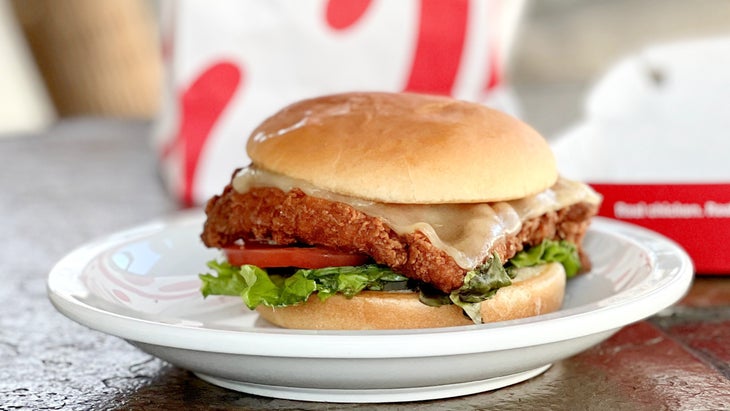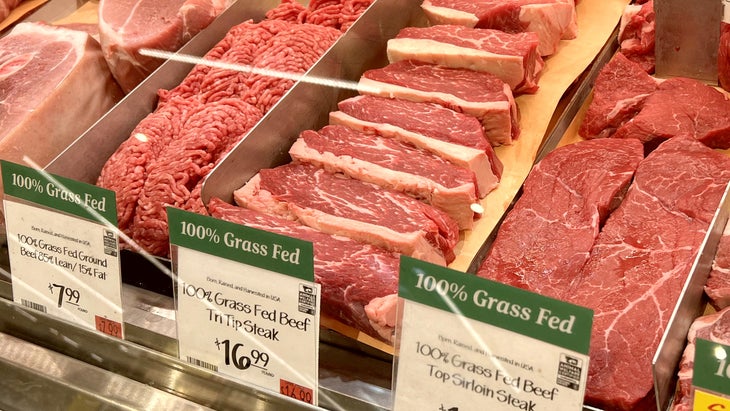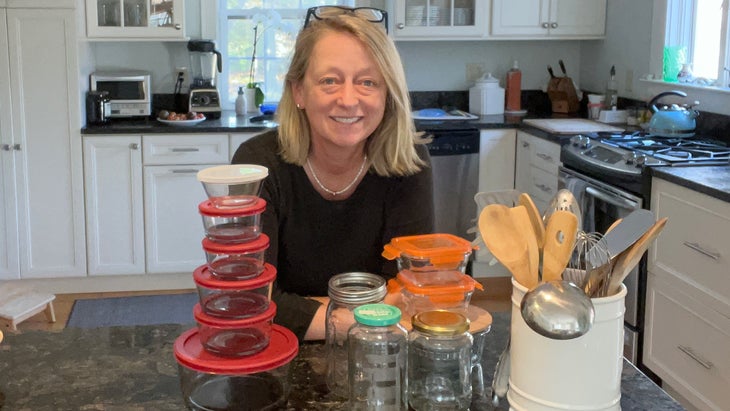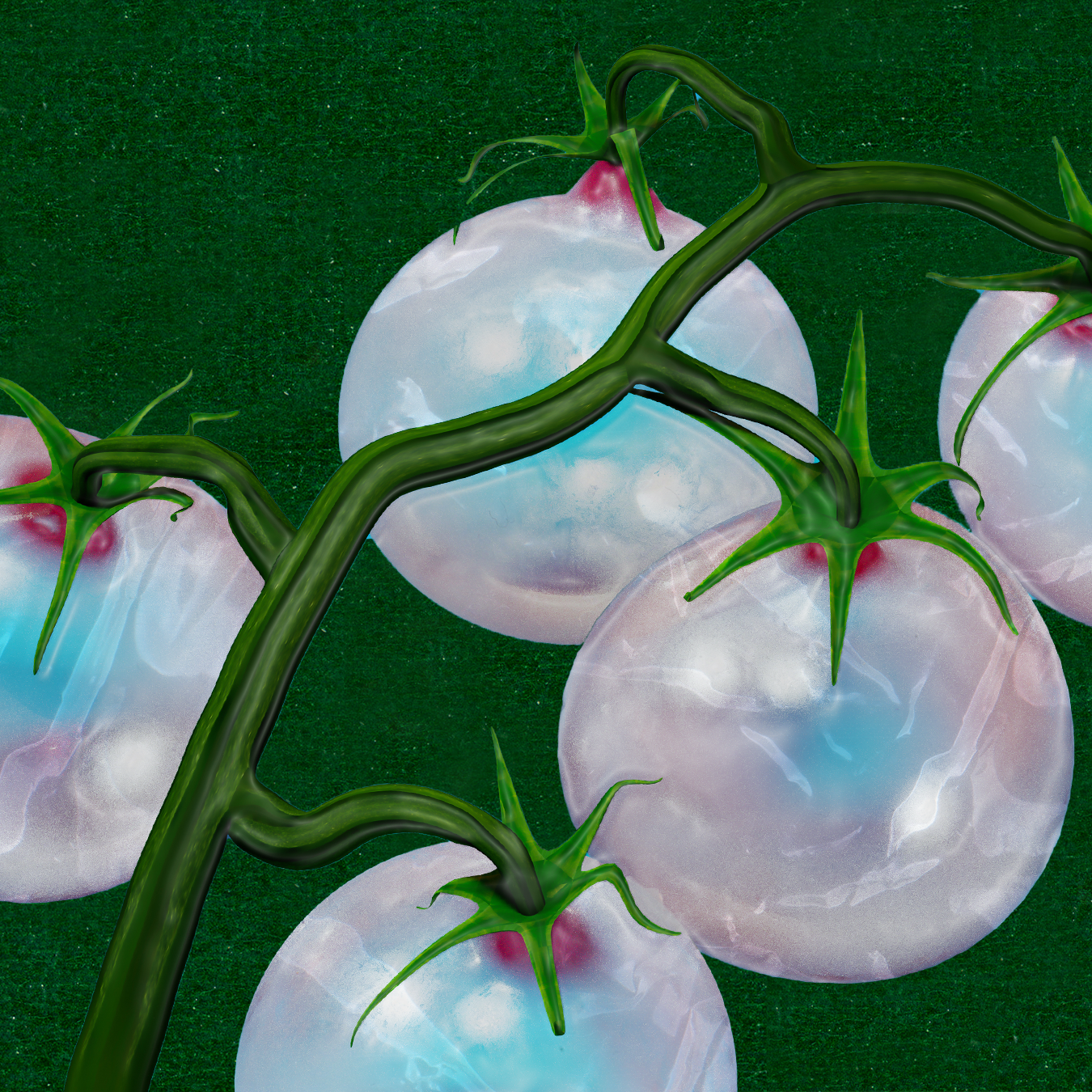Chick fil-A used to be my guilty pleasure, especially when traveling. When I’m rushing through airports that seductive red and white sign always calls for a detour and a Chicken Deluxe. Now, thanks to about the plastic chemicals found in food packaging, that sandwich is dead to me. A team of scientists and concerned citizens recently tested more than 300 unique foods for harmful plastic chemicals. My beloved treat sat near the top of the inauspicious leaderboard.
My regular readers know that I have long been concerned with the scary amount of plastic chemicals that we interact with as we go about our daily lives.

There’s the black plastic in our utensils. And the PFAS (a.k.a forever chemicals) found in everything from our clothing and furniture to our beauty products and toilet paper, the foaming agents in our toothpaste and laundry soaps.
The list goes on and on. We are a society addicted to plastic chemicals and all the modern conveniences they afford. Meanwhile, cancer rates in people under 50 are . I am in doubting that this is merely coincidence.
Climate Action Tips
Get more sustainability tips in our Climate Neutral-ish newsletter.But nothing freaks me out more than chemicals making their way into my family’s food. Who among us could ever enjoy a bite of a Chicken Deluxe again if we knew it were laced with poison?
I decided to look into what we know about chemicals in food packaging, what regulators are doing about it, and how we can protect ourselves.
Plastic Chemicals Pervade Our Everyday Food
I’ve been seeing pop up in my newsfeeds about plastic chemicals in food. I’ve had moments of paralysis in the grocery story trying to find a decent head of lettuce that wasn’t swathed in a plastic.
A group of Californians felt the same way. They embarked on a six-month research project to test common food items—from local grocery stores and take-out joints—for the presence of chemicals that enhance the performance of plastics. Phthalates, for instance, are a class of chemicals used to make plastic more pliable. Think: milk jugs and yogurt cups. Bisphenols are plastic hardeners found in beverage bottles and linings of canned goods.

The independent group, working under the name PlasticList, purchased 775 food samples of 312 items. Everything from Almond Breeze milk (currently sitting in my fridge) and grass-fed steak from Whole Foods to Taco Bell chicken burritos and, yes, my beloved Chicken Deluxe from Chick fil-A. They then tested those items for the presence of 18 common plastic-related chemicals that fall under the umbrella of endocrine-disrupting chemicals (or EDCs). Ample proof exists that EDCs cause like cancer, diabetes, and reproductive and neurological disorders.
The is pretty shocking: the PlasticList team detected plastic chemicals in 86 percent of the food tested. “But this doesn’t mean we should all freak out,” says Yaroslav Shipilov, the PlasticList team leader. “Although it was surprising to discover the presence of plastic chemicals in such a huge percentage of the food we tested, in all but 24 specific cases, the items are still safe to eat according to the three major regulating bodies, the Food and Drug Administration (FDA), the Environmental Protection Agency (EPA), and the European Food Safety Authority (EFSA).”
Shipilov hopes that his findings will spawn more testing. He also hopes that the regulating bodies will update their outdated safety limits, which are decades old and often contradictory. “For example, in some cases we have chemicals that have been banned from children’s toys, but not food. This suggests that they are not safe for toddlers to touch, but are fine for them to ingest,” he says.
Are Plastic Chemicals Harmful to People?
Make no mistake about it. A rapidly growing body of evidence proves that plastic chemicals are really bad for human health, not to mention the harm they cause the environment.
To get an overview of the health impacts, I reached out to Philip J. Landrigan MD, a pediatrician and biology professor at Boston College. Landrigan serves as director of both the Program for Global Public Health and the Common Good and the Global Observatory on Planetary Health.
In October 2023, Landrigan published , a wide-ranging report covering the many health and environmental implications of plastic chemicals.
“Plastics have allowed significant benefits to humanity in the fields of medicine, electronics, aerospace, and more. But it’s also clear that they are also responsible for significant harms to human health, the economy, and the earth’s environment,” says Landrigan. “Thousands of chemicals—including carcinogens, endocrine disruptors, neurotoxicants, and persistent organic pollutants—leach out of plastics and harm human health at every stage of the lifecycle, from production to discard.”
For example, Landrigan says, consider the coal miners and oil field workers who suffer from cardiovascular disease and lung cancer. (These workers extract the raw materials that create plastic.) The plastic production workers who have an increased risk of leukemia, lymphoma, and brain and breast cancer. The plastic recycling workers who contend with high rates of toxic metal poisoning and neuropathy. The workers in the plastics textile industry die of bladder cancer and lung disease. And the families who live near plastic production facilities who have increased risks of premature birth, low birth weight, asthma, childhood leukemia, lung cancer, and a host of other life-threatening ailments.
The report says that these harms exceed $500 billion per year in health-related costs in the U.S. alone.
“What’s most concerning to me as a pediatrician,” says Landrigan, “is the risk that chemicals in our food pose to pregnant women and young children. We all need to be more aware of plastics’ threats to human health. And we need to take intentional steps to reduce our exposure and our children’s exposure to plastic.”
Food Packaging Regulations Are Rolling Out–But Not Fast Enough
The federal government has been slow to respond in a meaningful way to the growing body of evidence that plastics in our food system are poisoning us.
Just last week, a group of environmentalists filed a new lawsuit against the Food and Drug Administration (FDA) over the use of phthalates in plastic food packaging. For close to a decade, the FDA has ignored calls to take stronger action against phthalates. We lag far behind the European Union in this regard.
Reporting from suggests that this refusal is due to pressure from the chemicals industry, which would surely suffer in the face of a phthalates ban.
Still, some states have begun to take independent action to protect our food from plastics chemicals.
“States have taken the lead on phasing out dangerous chemicals from food packaging and containers,” says Gretchen Salter, policy director for Safer States, a national alliance that works to protect people and the environment from toxic chemicals. “Our shows that 16 states have adopted 29 policies to remove chemicals like PFAS, phthalates, and bisphenols (chemicals like BPA and BPF) from food packaging. Additionally, Washington state has recently to ban all bisphenols in drink can liners and require disclosure of the use of all bisphenols in food can liners.”
5 Ways To Protect Yourself From Plastic Chemicals in Food
Try as we might, avoiding plastic food packaging altogether is downright impossible. But there are some things we can do to not only limit our exposure to their inherent chemicals (like phthalates, bisphenols, and PFAS), but to be part of long-term solutions that will protect our kids, grandkids, and all the generations to come.
-
- Avoid fast food and take-out. When you can’t, get that hot food out of its packaging as soon as possible to avoid chemical leaching. Even pizza boxes contain PFAS.
- Bring your own take-out containers. When dining out, bring a glass or metal container from home for leftovers. And avoid putting plastic take-out containers into the microwave. Although the specific research around this practice is , most experts believe this can cause additional contamination and leaching.
- Opt for fresh, whole foods. Skip the packaging whenever you can. For example, buy loose veggies rather than those ensconced in plastic. For meat and fish, buy direct from the counter. Ask for it wrapped in paper, rather than picking up a package from the chiller, where it’s been resting in a plastic package for who-knows-how-long. (Note: even that butcher’s paper likely has chemicals on it, so unwrap it as soon as you get home.)
- Ditch all plastic from your kitchen. Yep, you heard me—all of it. Storage containers, colanders, utensils, cereal bowls. Start to replace all of those items with glass, wood, metal, and ceramic. I’ve scored some really high quality replacements at the second-hand stores I love to frequent. And don’t forget the Saran Wrap and Zip-Lock bags. Transition away from those, too, and go with beeswax bowl toppers and silicone baggies.
- Speak up! It takes one minute to to create a Global Plastics Treaty. Do it! Another powerful action you can take is to write a letter to your state congress representatives. Urge them to support the Global Plastics Treaty as well as state laws to ban toxic plastic chemicals. Here are to get you started.

Kristin Hostetter is ���ϳԹ���’s sustainability columnist. Sadly, she has eaten her last Chick fil-A Chicken Deluxe. But she’s currently working on recreating a healthier version in her home kitchen. Follow her journey to live more sustainably by for her twice-monthly newsletter.


